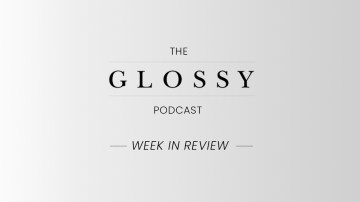This is an episode of the Glossy Beauty Podcast, which features candid conversations about how today’s trends are shaping the future of the beauty and wellness industries. More from the series →
Subscribe: Apple Podcasts • Spotify
From Kylie Jenner to Martha Stewart, 51-year-old skin-care brand Mario Badescu has been cited as a go-to by a wide range of celebrities known for their strong thirst trap game.
What started as a small facial studio in New York City has now become a brand stocked in thousands of stores at national and international retailers. Joseph Cabasso, the president of sales and co-owner of Mario Badescu, joins this week’s Glossy Beauty Podcast to talk the past, present and future of the brand. He tells the story of the brand’s history, including how his family acquired the brand and and who Mario Badescu was. During the episode, he shares accounts of its early days, including its big break with Henri Bendel and the start of its 40-plus-year relationship with Martha Stewart, who goes into its New York salon for monthly facials to this day. He discusses the background of Mario Badescu’s best-selling hero drying lotion, as well as the ways the brand has evolved over the years to reach new generations, from navigating Urban Outfitters and the VSCO girl era to TikTok today. He also gets candid about TikTok’s skin-care “cancel culture,” and discusses why his company is keeping prices low in a time of inflation and why the brand is not big on paid influencer marketing.
On Martha Stewart
“Martha Stewart’s mom introduced her to Mario Badescu, and Martha Stewart introduced her daughter Alexis to Mario Badescu, and then Alexis daughter’s introduced her kids to Mario Badescu. We’re a family business. We stay in people’s medicine cabinets forever.
She just really loves us. And she really always talks about us — not paid, just [based on] the love she has for us.”
TikTok’s skin-care “cancel culture”
“I’ve seen influencers knock our brand, and the next day, they’re coming out with their own brand. … It’s happened with multiple influencers. I hate to say names, and I won’t say names live, but it’s pretty disgusting what people do. These are not chemists, these are not estheticians, these are not doctors that are talking about the brand. They really don’t know much; they really don’t know what they’re talking about. You could destroy people like that. It’s unfair to all these brands that these people, if they have a thorn in their brain, they’re just gonna blurt it out and try to destroy us. But come meet me. I’m a nice guy, and my father’s a nice guy, and my nephews are nice people, and my kids are nice people. … You’re not only destroying a company; you’re destroying a family. And it’s hurtful. But I just keep on going. … I think people see the true colors of these people knocking brands, and then they’re in Sephora the next minute, and they are in there for a year or two, and that’s it. They exit and people catch on. People know the truth, and they see the truth at the end. So I don’t get bothered by it. I don’t let it affect me.”
Resisting inflation
“We try to make our products very affordable. Companies are making price increases. We haven’t. With this economy and what’s going on, we’re really trying to keep that customer. We’re trying to make it affordable. I don’t know many brands where you could get a full line for a full regimen for under $100. We do that for a very big reason: We don’t want them to just buy one cream for $80. We want them to buy multiple products. We want them to really say, ‘Oh, OK, I love this drying lotion. It’s $17. Let me see what else [they have]. OK, a cleanser for $12, that facial spray for $7, an eye cream for $18.’”




